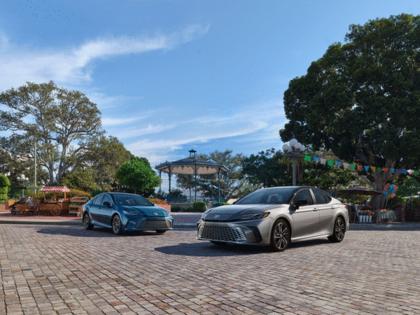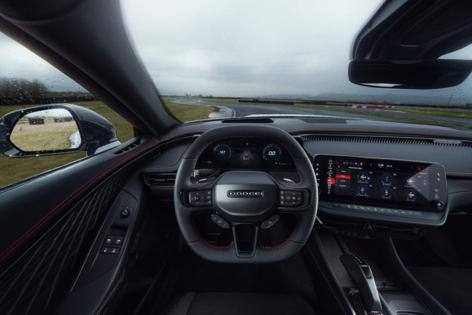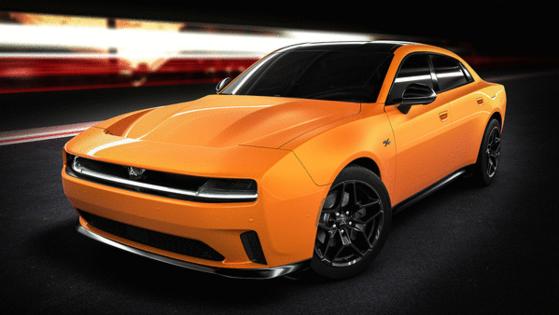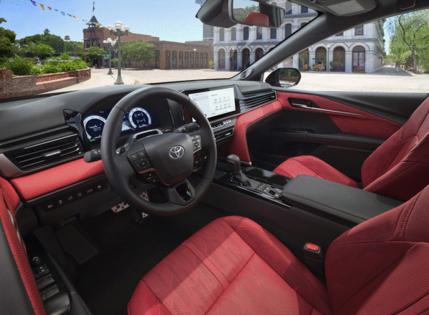The rise of hybrids, EVs and innovative designs bring new life to sedans as they face off against dominant crossovers
Published in Automotive News
Oldsmobile sold a staggering 518,160 Cutlasses in 1979, making it the best-selling car in America. By the early ‘90s, when the Honda Accord and Ford Taurus were battling for passenger car supremacy, each sold around 400,000 units per year. Mid-size cars ruled America’s roads.
Beginning in the late ‘90s, however, Americans changed their desires to crossovers. In 2023, Honda sold 197,947 Accords in the U.S., but moved 361,457 CR-Vs. Nissan Rogue outsold the Altima 271,458 to 128,030. Even the best-selling Camry’s 326,094 total sales were surpassed by 434,943 RAV4s.
Despite this shift, there are stand-out sedans.
“From a sales standpoint, it’s the Toyota Camry,” said Joseph Yoon, consumer insights editor at Edmunds. “Camry and Accord are the most recognizable nameplates. The Honda Accord is interesting — very sleek, efficient, (with an) interior (that) feels upmarket without feeling too luxurious.”
To keep it fresh, Toyota is updating the Camry for 2025 with Prius hammerhead styling, hybrid power and optional all-wheel-drive. An available 12.3-inch touchscreen, head-up display and wireless phone charging add tech. Stay safe with automatic emergency braking and lane tracing steering. When it arrives this spring, expect 50 mpg and a $30,000 base price.
“Americans’ present fascination with hybrid-electric vehicles is putting sedans back on the consideration list,” said Curt McAllister, Midwest public relations manager at Toyota. “We have a hybrid variant for every one of our sedans, and they are in high demand. The all-new 2025 Camry will be 100 percent hybrid.”
Camry’s chief rival, the Honda Accord, remains formidable with a $27,895 base price. Choose a 192-horsepower turbo-four that delivers 29 mpg/37mpg city/highway or optional Sport Hybrid delivering 204 horsepower and 48 mpg.
“Honda has always incorporated exceptional packaging into our car offerings—a key consideration for crossover buyers,” said a Honda spokesperson. “This continues to be a key component of our development and is taken into consideration for each new iteration. It’s more of an evolution of delivering the best combination of functionality, design, and dynamics to meet our customer wants.”
Given the utility of crossovers, why should drivers consider sedans?
“They’re cheaper,” Yoon said. “For instance, the Toyota Camry vs. Highlander. Camry hovers around $31k-32k, while Highlander is around $46k. The smaller RAV4 is still a $35k car. When price gaps are that significant, people ask, ‘Do I really need a crossover?’ At the end of the day, money talks.”
For example, the Nissan Altima starts at $26,000, which is $2,000 less than the Rogue. Kia sells its K5 sedan for just $25,590. The Subaru Legacy, sharing much with the iconic Outback, comes standard with all-wheel-drive, tablet-style touchscreen and wireless phone connections for $24,895. Pay more for a turbo-four that whisks it 0-60 mph under six seconds.
“For many people, choosing a sedan boils down to pocketbook and need,” McAllister said. “Not everyone can afford a new crossover. Also, not everyone needs the space and utility. A lot of Americans are merely looking for an affordable, safe mode of transportation. Some people just like the appearance and ride-feel associated with sedans.”
A favorite is the Chevy Malibu, which starts at $25,100. Wearing body creases that recall 1950s Corvette side coves, it combines a balanced chassis and 163 horsepower turbo-four delivering 28 mpg/36 mpg city/highway. Add conditioned front seats, heated steering wheel and wireless phone charging as luxuries.
And, let’s face it, cars are just more fun to drive.
“There’s only so much we can do to overcome physics in how crossovers handle,” Yoon said. The way the car feels behind the wheel versus a crossover is completely different. Some people don’t like the heavy feeling of a crossover.”
Adding electricity to the next-generation 2024 Charger, Dodge trades burbling petrol-fueled V-8s for quicker electric thrust — although Dodge isn’t finished smoking fossils.
Its classic shape is endowed with smoother flanks and R-Wing pass-through hood spoiler. Inside, it’s all flatscreens, head-up displays and suave, angry vibes. Go electric to tap 670 horsepower for 0-60 mph in 3.3 seconds. All-wheel-drive is standard. Or burn fossils via 550-horsepower and 420-horsepower 3.0-liter Twin-Turbo inline-six engines. Dodge’s “Fratzonic Chambered Exhaust,” essentially a bellowing tuned trumpet, warns kids this is no Tesla.
The Charger won’t be alone. Hailing from Wolfsburg later this year is the Volkswagen ID.7 — an all-electric Passat-sized sedan with up to 386 miles range and quick acceleration. A minimalist cabin with 15-inch infotainment screen, augmented reality head-up display, ventilated massage seats and electrochromic glass roof entice upscale drivers.
“Drivetrain technology and electrification is the way forward,” Yoon said. “With EVs, aerodynamics matter. Between design and general innovation, mid-size sedans will continue to be compelling vehicles. Hundreds of thousands of people are buying them.”
Twenty years ago, Subaru offered an Outback version of its Legacy sedan that foreshadowed cars like today’s Toyota Crown hybrid sedan that looks like a new Prius, classic Celica and Highlander crossover had a three-way. Maybe an innovative melding of the sexes is imminent, or maybe not, but sedans will continue to evolve.
“The segment will remain fairly consistent with today’s offerings, but the transition to hybrids and (EVs) will be the biggest change,” the Honda spokesperson added. “Design and dynamics will continue to be key differentiators versus crossovers. There are still a lot of people who like to drive cars and there are numerous advantages in affordability, fuel economy, handling, acceleration and being fun-to-drive.”
At least in understanding the future of sedans, historic rivals find common ground.
“While 70 percent of the U.S. new vehicle market is comprised of truck and SUV sales, that leaves a healthy 30 percent for passenger cars, or roughly 5 million vehicles,” McAllister said. “Sedans will remain relevant as long as there is terrific styling, cutting edge in-cabin technology and the latest safety systems.”
But for those buyers who really just want an Accord or Camry EV?
“I’m curious to see what Toyota does next,” Yoon said. “Mid-size sedans are in a weird limbo as we push toward electrification. Will they try to figure out a plug-in situation? Sales numbers for sedans are too significant to toss them by the wayside. Consumers still want them.”
©2024 Tribune Content Agency, LLC














Comments